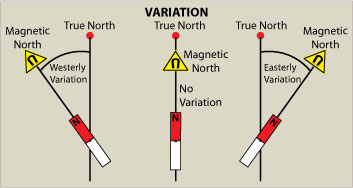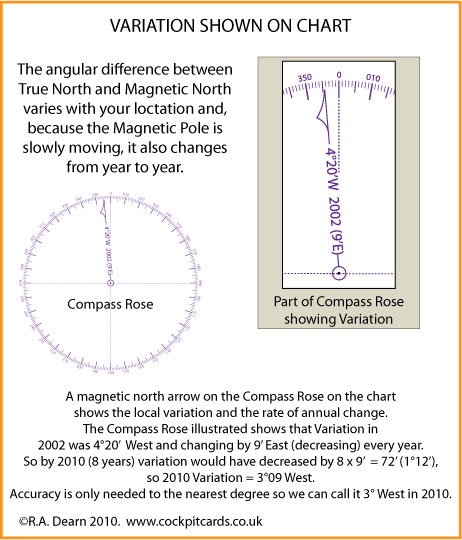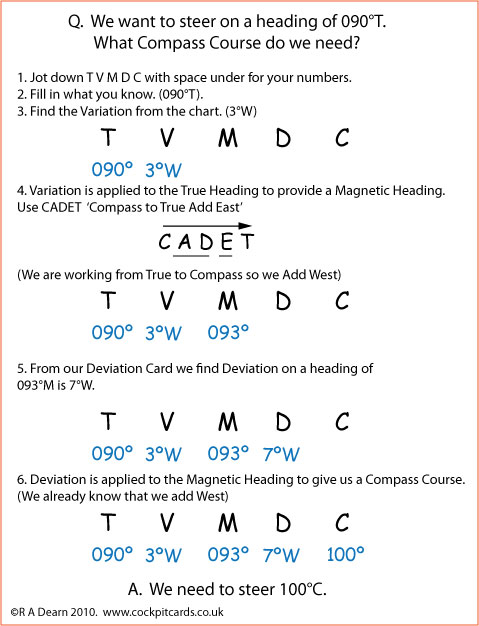
The steering compass on any vessel remains essential to navigation. It will almost certainly be a magnetic compass and as such will be subject to errors of Variation and Deviation. We must be aware of these and take into them into account for safe navigation.
Two main errors affect the magnetic compasses on any boat. Variation and Deviation.

VARIATION is the difference between True North and Magnetic North. The Variation for your local area is found by looking at the Compass Rose on your chart (see the diagram below). It shows a Magnetic North Arrow, the local variation and the annual rate of change. There are usually several Compass Roses on the chart, look at the one nearest your position.
The diagram at the top of the page shows that Variation varies with your location. Have a look at the examples below.
In the United Kingdom Variation is currently (2020) very small, with the East Coast of England approximately zero degrees 45minutes East. Bantry Bay (South West Ireland) is about 3 degrees 30 minutes West. Limassol (Cyprus) is about 5 degrees East. Nantucket (USA) is about 11 degrees West. Maine (USA) is about 20 degrees West. Tokyo is about 7 degrees 40 minutes West.

DEVIATION – Ferrous metal (engines etc.) and electrical equipment can deflect the compass from magnetic north. A compass corrector can adjust your steering compass to minimise errors and then produce a Deviation Card showing the remaining deviation. You can also ‘swing’ your own compass and produce your own deviation card.


To convert a course to steer from True (T) to a course to steer to Compass (C) we must allow for both Variation (V) and Deviation (D). A simple way to remember the order of work is by using the mnemonic ‘True Virgins Make Dull Company’ and the word CADET (Compass to True Add East) to remind us if we are adding or subtracting.

When we are converting from Compass to True the word CADET reminds us that we ADD any Eastery variation and deviation. Any Westerly variation or deviation would, of course, be subtracted.
When converting from True to Compass the reverse is correct. We SUBTRACT any Eastery variation or deviation and add any Westerly variation or deviation.


Using this step by step method of working between True and Compass greatly reduces the chances of making mistakes.
Anchorlight, 56 Stray Park, Yealmpton, Plymouth, Devon PL8 2HF. United Kingdom